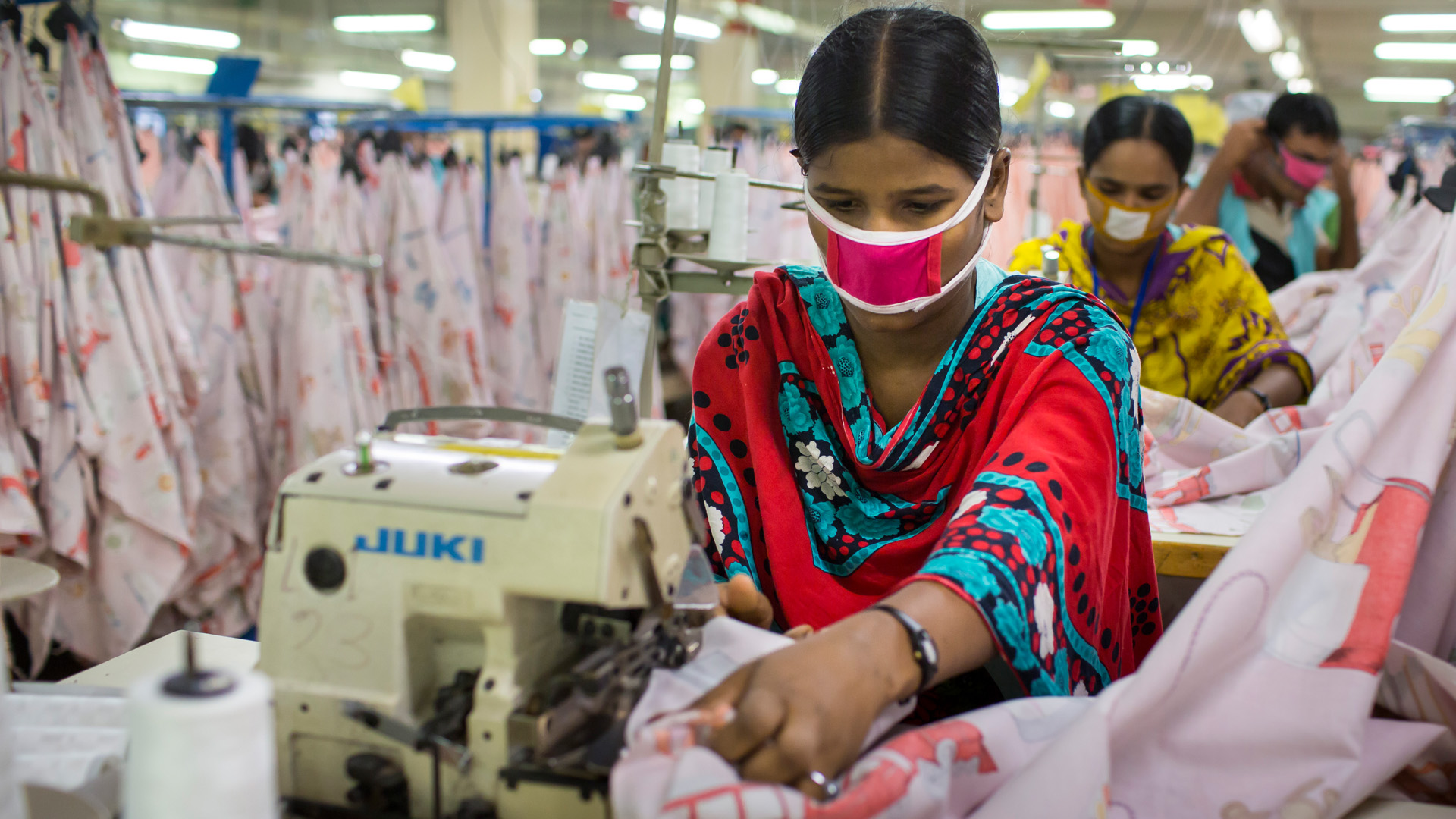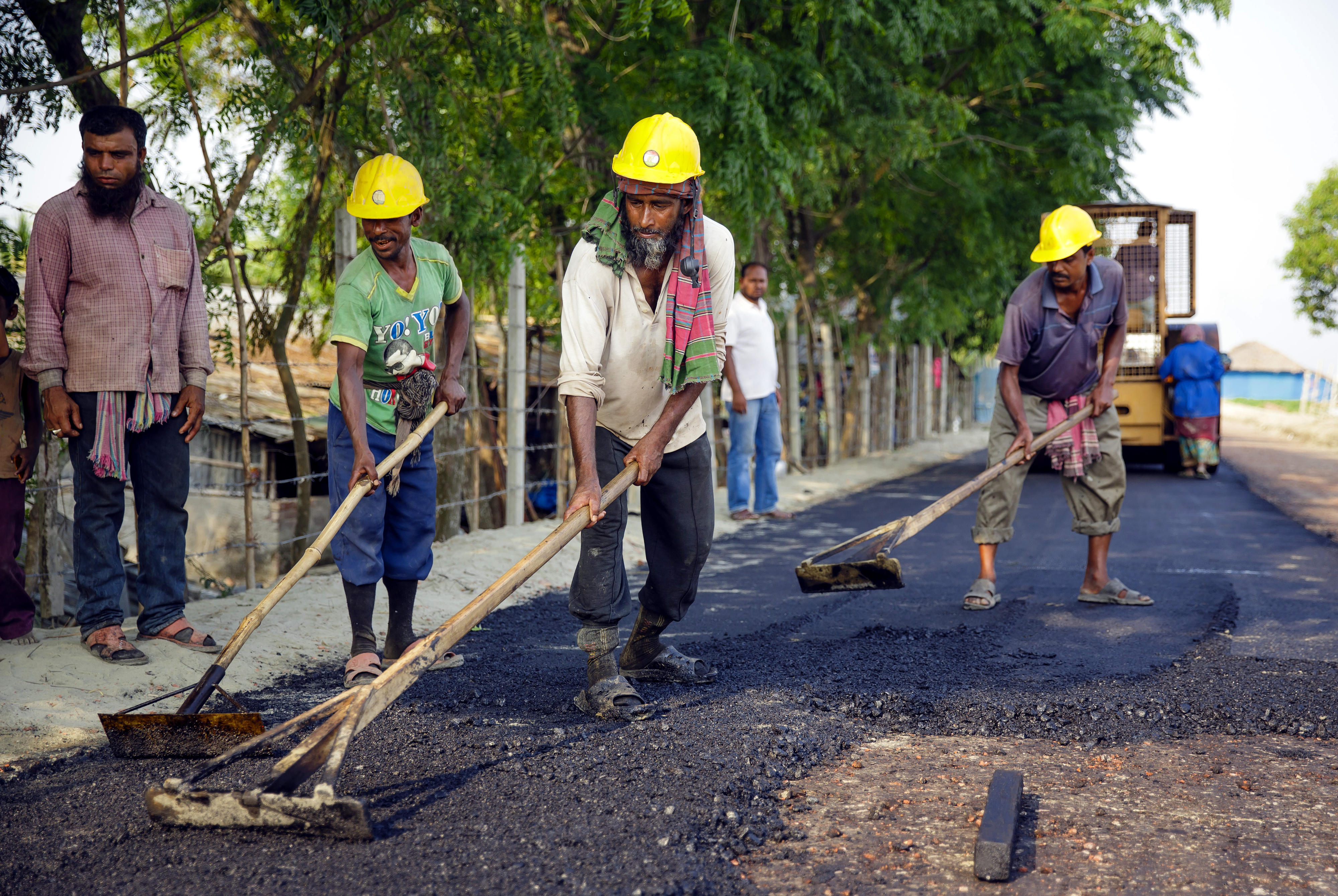Workers at the Zaber und Zubair Fabrics Ltd. textile company in Tongi, Bangladesh
Copyright© Thomas Imo/photothek.net
Economic situation The economy is picking up
The economy, which is mainly focused on textile exports, has recovered rapidly from the slump caused by the COVID-19 pandemic, with growth of roughly six per cent being achieved. However, Russia’s war of aggression against Ukraine has pushed growth back down slightly again, with the World Bank now forecasting only around five to six per cent for 2023.
More than half of the country’s gross domestic product (GDP) is generated by its services sector, and one third by its industrial sector (figures from 2021). Besides a growing textiles industry, Bangladesh also has new export-oriented sectors with further potential for growth, such as shipbuilding, ceramic wares, pharmaceuticals, bicycle manufacturing and the IT sector. Textile products still dominate exports, accounting for roughly 85 per cent.
One of the most important sources of foreign exchange, in addition to export earnings, are the remittances of Bangladeshis working abroad – in particular in the Gulf states. In 2023, total official transfers amounted to the equivalent of about 23 billion US dollars.
Obstacles to investment
A major cause of poverty in Bangladesh is underemployment. The government wants to create more jobs by fostering labour-intensive manufacturing industries, and is trying to attract foreign investors by offering them tax incentives and reduced customs tariffs (in particular in the country’s free trade zones). However, this reasonably favourable formal and legal environment must be set against inefficient bureaucracy, lack of transparency and corruption.
Workers building a new dam road in Khulna
The poor state of the country’s infrastructure also puts off potential investors. Many roads and railway lines are congested and in a state of disrepair. Silted-up rivers and ports also hamper the transport of goods. A further brake on economic development is the inadequate power supply. In order to address this issue, the government has so far established eight Export Processing Zones (as they are known); these are areas with better infrastructure and power supply, the aim being to encourage companies to set up business there.
The textiles industry
Bangladesh is the second largest textiles and clothing manufacturer after China. The industry generates more than 85 per cent of the country’s export earnings and employs around four million women and men. The main markets for these textiles exports are the EU (in this case Germany) and the US. Bangladesh therefore plays a central role in German initiatives like the Textiles Partnership and the Green Button certification mark; and also in relation to the Act on Corporate Due Diligence in Supply Chains.
However, because the health and safety standards in Bangladesh textile factories are very poor, there have been frequent health and safety incidents. The most severe accident at a manufacturing facility in the history of the country occurred on 24 April 2013, when the Rana Plaza building, a nine-storey factory and business premises near the capital of Dhaka, collapsed. More than 1,100 people were killed and over 2,000 were injured.
In response to international pressure, far-reaching fire safety and other building safety regulations were introduced in the textiles sector. The initiatives started in Bangladesh could also inspire other countries to follow the same path. Despite some shortcomings still remaining, Bangladesh is already forging ahead in certain areas.
As one of the world’s least developed countries (LDCs), Bangladesh still enjoys tariff-free access to markets within the EU. However, the country is set to lose this status in 2026, at which point trade preferences will end. This means that, in addition to facing stiffer price competition, Bangladesh will also be vying for business with other competitors (for instance Viet Nam). The country will also have to comply with tougher standards on human rights, labour rights, environmental protection and good governance if it wants to continue exporting its goods to the EU without having to pay full customs duty on them.
As at: 15/01/2024

